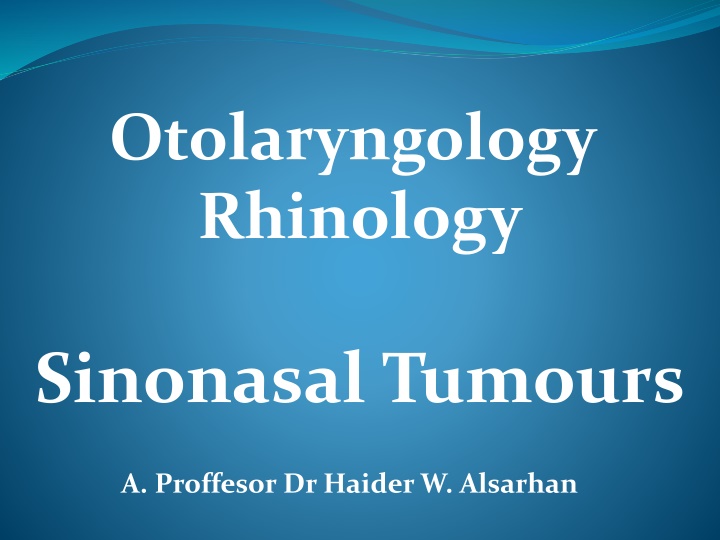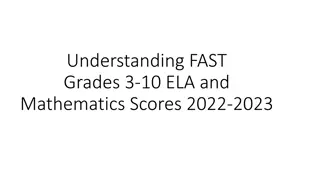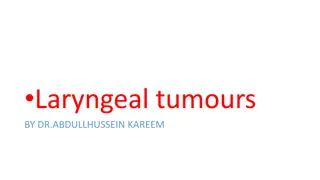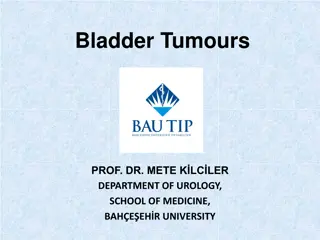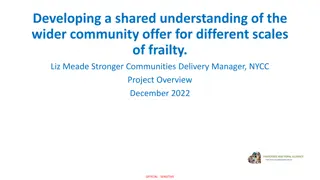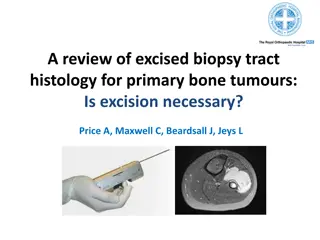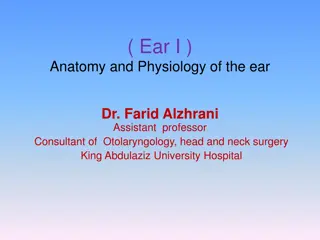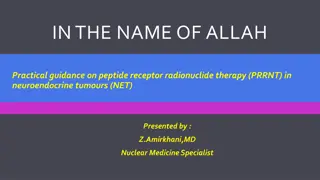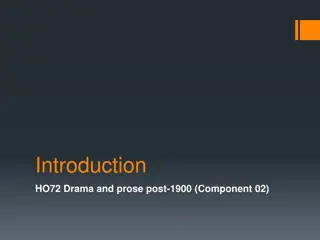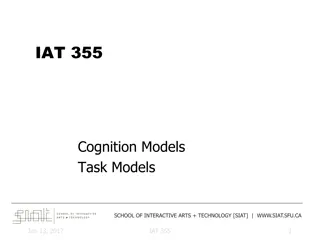Understanding Sinonasal Tumours in Otolaryngology
Sinonasal tumours in otolaryngology, classified as benign or malignant, present with various clinical features. Learn about their staging, classification, and manifestations, aiding early detection and management.
Download Presentation

Please find below an Image/Link to download the presentation.
The content on the website is provided AS IS for your information and personal use only. It may not be sold, licensed, or shared on other websites without obtaining consent from the author.If you encounter any issues during the download, it is possible that the publisher has removed the file from their server.
You are allowed to download the files provided on this website for personal or commercial use, subject to the condition that they are used lawfully. All files are the property of their respective owners.
The content on the website is provided AS IS for your information and personal use only. It may not be sold, licensed, or shared on other websites without obtaining consent from the author.
E N D
Presentation Transcript
Otolaryngology Rhinology Sinonasal Tumours A. Proffesor Dr Haider W. Alsarhan
Classification: Both benign and malignant groups can be classified into epithelial, non epithelial, odontogenic, and fibro-osseous tumours. Benign. Epithelial (papilloma, adenoma and inverted papilloma). Non-epithelial (fibroma, haemangioma, nasal glioma, Schwannoma, chondroma, haemangiopericytoma, chordoma, meningioma and osteoma). Malignant. Epithelial (squamous cell carcinoma, adenocarcinoma, anaplastic carcinoma, transitional cell carcinoma, malignant melanoma, salivary gland malignancy in particular adenoid cystic carcinoma and olfactory neuroblastoma. Non-epithelial (fibrosarcoma, angiosarcoma, chondrosarcoma, rhabdomyo-sarcoma, and osteogenic sarcomas).
Staging The UICC staging is as follows: Tx Primary tumour cannot be assessed. T0 No evidence of primary disease. Tis Carcinoma in situ.
Maxillary sinus: T1 Tumour limited to the antral mucosa with no erosion or destruction of bone. T2 Tumour causing bone erosion or destruction, except for the posterior wall, including extension into the hard palate and/or middle meatus. T3 Tumour invades any of the following: bone of posterior wall of maxillary sinus, subcutaneous tissues, skin of cheek, floor of medial wall of orbit. T4 Tumour invades orbital contents beyond the floor or medial wall including apex and/or any of the following: cribriform plate, base of skull, nasopharynx, sphenoid sinus, frontal sinus.
Ethmoid sinus: T1 Tumour confined to ethmoid with or without bone erosion. T2 Tumour extends into nasal cavity. T3 Tumour extends to anterior orbit and/or maxillary sinus. T4 Tumour with intracranial extension, orbital extension including apex, involving sphenoid and/or frontal sinus and/or skin of nose.
Clinical features: In its earliest stages these tumours cause no symptoms. Blood- stained nasal discharge and increasing unilateral nasal obstruction should raise suspicion. Late features are sadly often the presenting features and include: Unilateral facial swelling. Swelling or ulceration of the gums or palate. Epiphora, owing to involvement of the nasolacrimal duct. Proptosis and diplopia, due to involvement of the fl oor of the orbit. Pain commonly in the cheek, but may be referred to the ear, head or jaw Metastatic neck nodes
Investigations: A high definition CT scan on both bone and soft tissue windows is the ideal to show soft tissue and bone involvement. A T2 weighted or STIR sequence MRI scan may distinguish tumour from inflammation, retained secretions and fat.
Treatment Inverted Papiloma : Inspite of high recurrence rate , endoscopic resection is better than open resection , close fellow up and observation is needed after surgery Malignant tumors : (a) Lateral rhinotomy for tumour limited to the lateral nasal wall, nasal cavity and ethmoid. (b) Total maxillectomy. For antral carcinoma. (c) Craniofacial resection is indicated when the cribriform plate is involved or breached. Adjuvant radiotherapy may be indicated depending on tissue margins Close fellow up each 3 month after treatment by enddoscopic examination , CT scan and MRI is highly needed Overall a five-year survival of 40-50%
